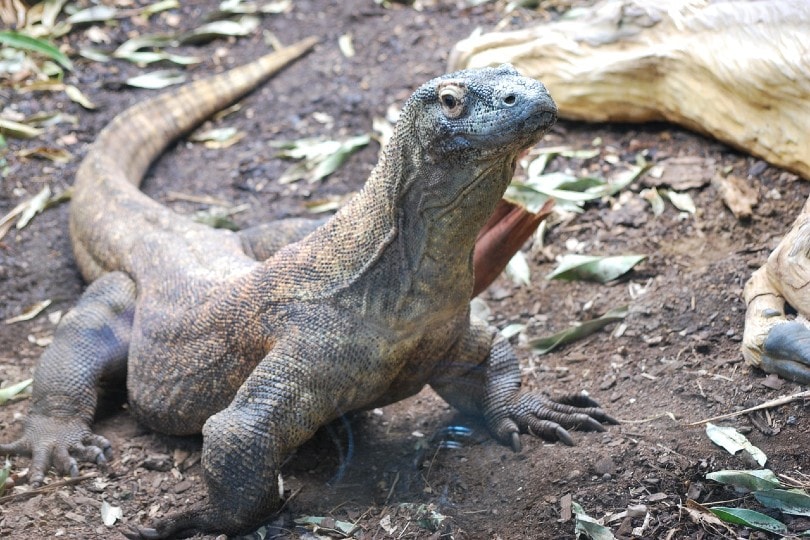Several traits define the class Reptilia. These are cold-blooded or ectothermic animals whose body temperatures reflect the ambient environment. Other distinguishing characteristics are scales and air-breathing. Scientists have documented 12,060 species. As you may surmise, the environment is a limiting factor, given their body heat regulation. That also influences their size.
Dinosaurs are likely the most well-known reptiles. Their existence almost seems fantastical when considering the size of these animals. It’s hard to imagine a time when these animals were commonplace. Indeed, the world was a different place that favored their existence. Our round-up below considers the species living and extinct of this class, with the largest ones standing head and shoulders above the rest.

How Are Reptiles Classified?
Four orders of living reptiles exist. They include Squamata (snakes and lizards), Crocodilia (crocodiles), Testudines (turtles), and Rhynchocephalia (reptiles unique to New Zealand). We can also broaden our scope to include the extinct dinosaurs because of their fame in archeology. Even if they no longer exist, every school child has probably learned about these magnificent creatures.

The 9 Largest Reptiles in the World
1. Green Anaconda (Eunectes murinus), Largest Snake
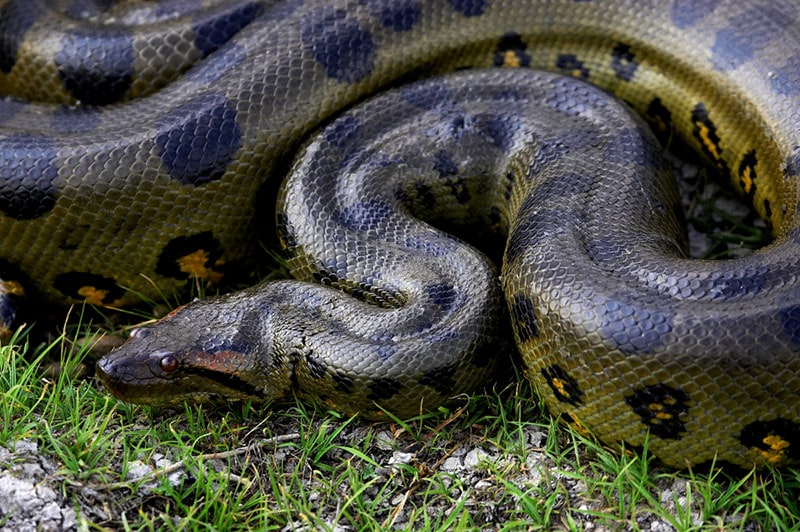
| Size: | 20–30 feet |
| Weight: | Up to 550 pounds |
| Origin: | South America |
The name of the green anaconda invokes fear. It’s a massive animal that reaches lengths nearly the size of a bus, which gives the reptile its competitive edge. They live in the wetlands around waterways in South America, and they rely upon stealth and camouflage to attack their prey quickly and decisively.
2. Komodo Dragon (Varanus komodoensis), Largest Lizard
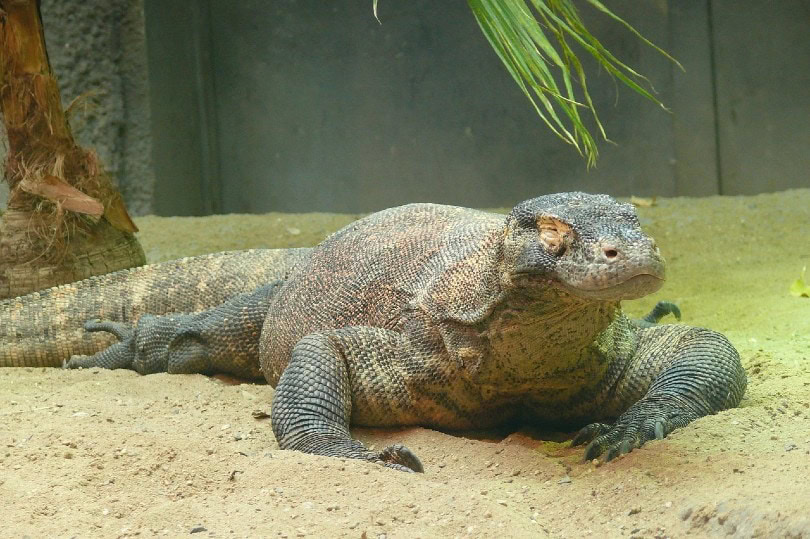
| Size: | Up to 10 feet |
| Weight: | 150–160 pounds |
| Origin: | South Asia |
The Komodo Dragon has a formidable presence, as its name suggests. This lizard can get up to 10 feet long in the wild, and the largest recorded weight for a Komodo Dragon was over 360 pounds. They are diurnal and sedentary animals until it comes to feeding. It is quick on its feet and a savage hunter. If the attack doesn’t kill its prey, the bacteria in its saliva will finish the job.
3. Common Water Monitor (Varanus salvator)
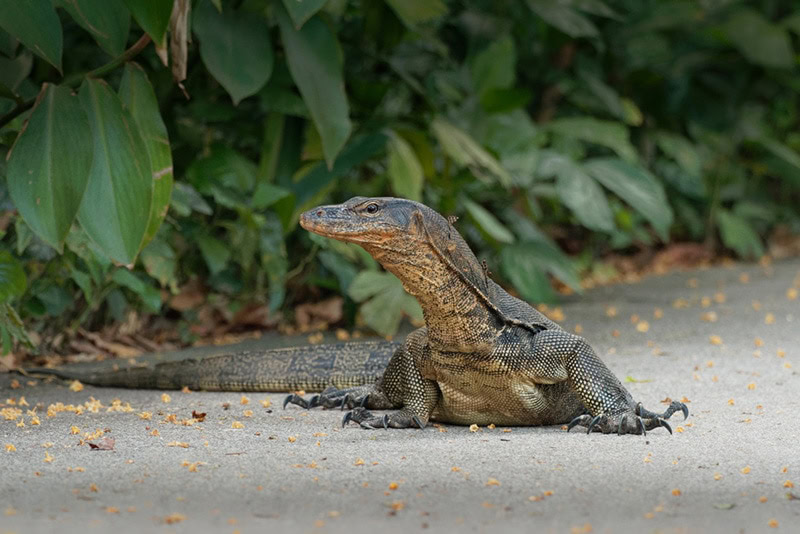
| Size: | 4–6 feet |
| Weight: | Over 110 pounds |
| Origin: | Southern Asia |
The Common Water Monitor is a semi-aquatic animal that consumes various prey, depending on what’s available. It’s a stealthy predator of wetlands and aquatic environments. They are intelligent creatures and can form bonds with their caretakers, unlike many reptilian species. They can even learn tricks, making them unique among reptiles.
4. Saltwater Crocodile (Crocodylus porosus), Largest Crocodile
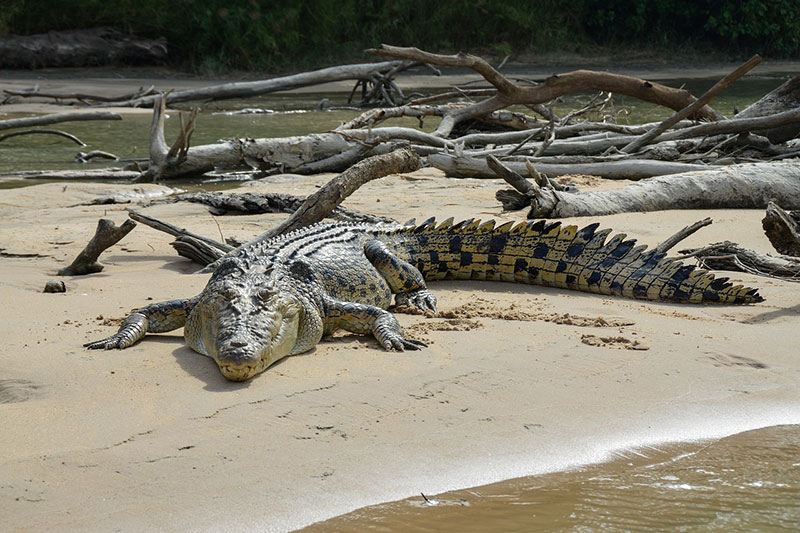
| Size: | Up to 18+ feet long |
| Weight: | Between 170 to 2,200 pounds |
| Origin: | Australia and the South Ocean |
The Saltwater Crocodile is the largest living reptile species on Earth. While females will usually weigh no more than 230 pounds, some males can get up to over 2,000 pounds. It’s an intelligent animal capable of communicating with its cohorts. It’s a predator like others of its kind. This reptile relies on speed and stealth to capture its prey. Its impact on humans is positive for those who value its leather for various goods.
5. Nile Crocodile (Crocodylus niloticus)
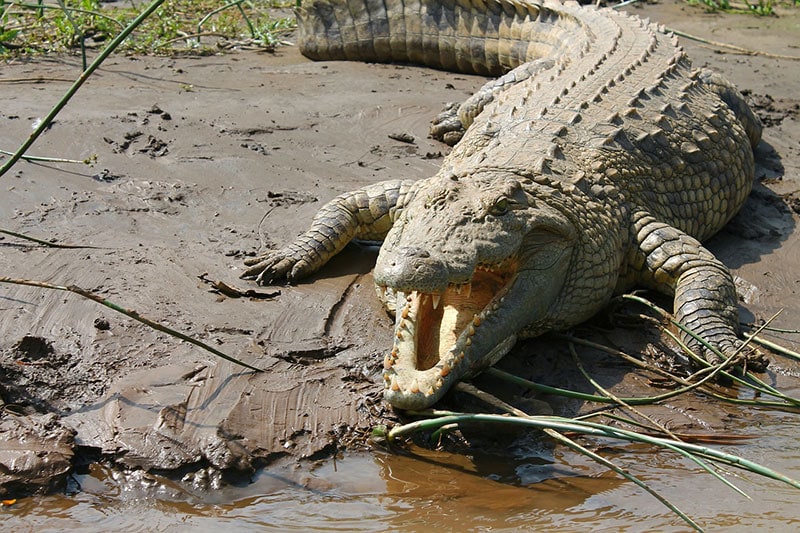
| Size: | 13–15 feet |
| Weight: | On average, 900 pounds |
| Origin: | Eastern Africa |
The Nile Crocodile lives in the wetland and coastal environments of Eastern Africa. It is a species of least concern. However, they are aggressive animals and dangerous foes, although social with their own kind. They spend most of their days basking in the sun. Yet, they are also opportunistic and will readily take prey that comes within their grasp.
6. Galapagos Tortoise (Chelonoidis niger), Largest Tortoise
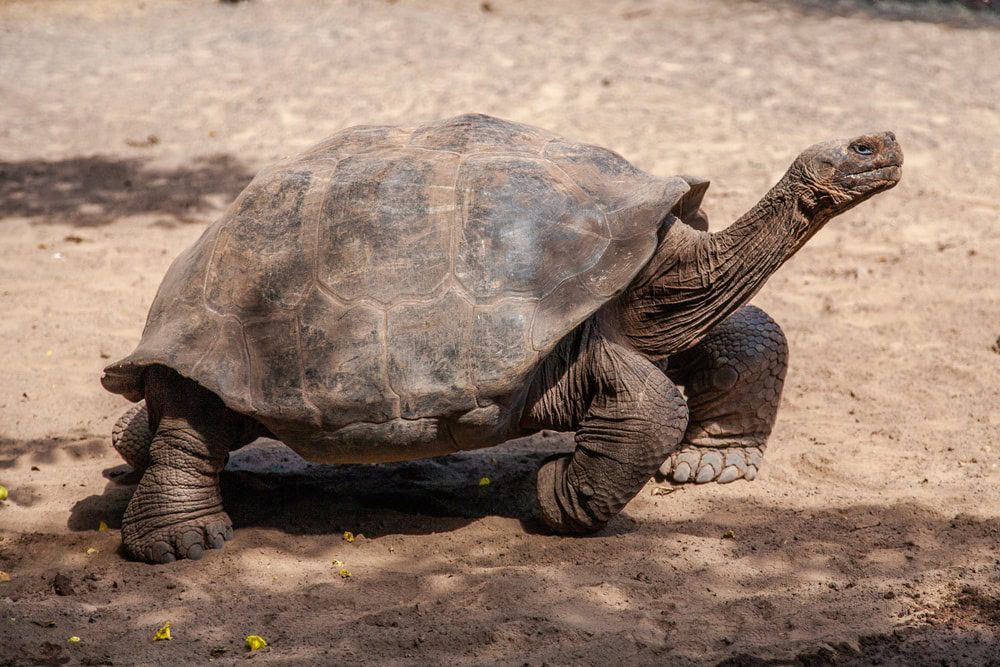
| Size: | Up to 6 feet |
| Weight: | Over 900 pounds |
| Origin: | Galapagos |
The Galapagos Tortoise is a massive terrestrial reptile. Few animals can tip the scales at over 900 pounds. This species is remarkably long-lived, which its name suggests. Some individuals can live over 170 years in captivity. This reptile is known for its regular habits. It likes its routines of feeding and sleeping. They are massive animals that live life simply.
7. Leatherback Sea Turtle (Dermochelys coriacea), Largest Turtle
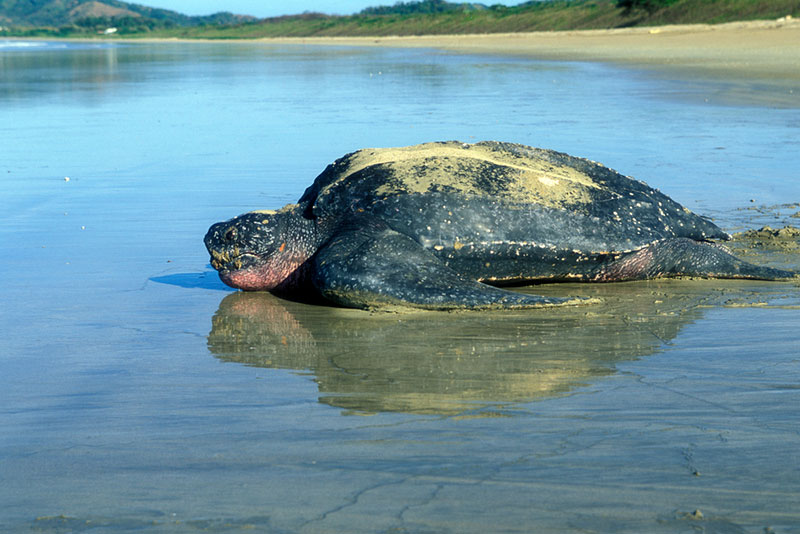
| Size: | Up to 63 inches |
| Weight: | Over 1,900 pounds |
| Origin: | North Atlantic waters |
The Leatherback Sea Turtle is the largest of its kind. They live in the harsh climates of the North Atlantic waters. They are nomadic and will follow food sources, and they are mainly solitary except during mating. They are predators in the marine ecosystem, although the populations are threatened by a host of environmental pressures.
8. Supersaurus (Supersaurus vivianae), Longest Dinosaur
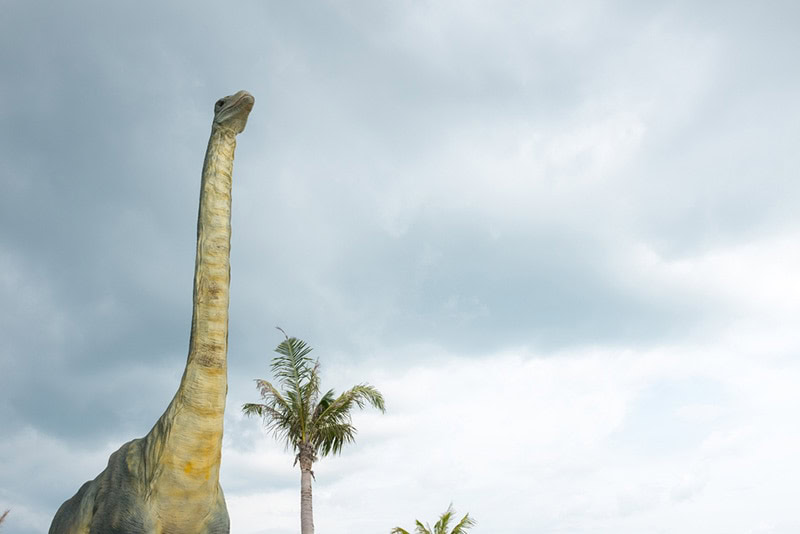
| Size: | 105–138 feet |
| Weight: | 35–40 tons |
| Origin: | North America |
The Supersaurus is appropriately named, as the evidence suggests. Its height is the key to its size, with this massive species having been found in Portugal and Colorado. The animal may have been larger than the recovered skeletal pieces imply. Estimates point to this animal roaming Earth about 153 million years ago. Based on what’s been recovered already, more surprises are in store.
9. Maraapunisaurus (Maraapunisaurus fragilimus), Heaviest Dinosaur
| Size: | 99–131 feet |
| Weight: | 87–132 tons |
| Origin: | South America |
The Maraapunisaurus isn’t the most well-known dinosaur, but that doesn’t distract from their massive size. We don’t know a lot about this reptile, given the scant number of fossils. Everything uncovered suggests it was a massive animal. It’s a relatively new discovery that promises more surprises as more evidence comes to the surface.

Conclusion
Reptiles are an interesting topic. Their physiology suggests they won’t survive yet, somehow, they did and still do. External events likely wiped many of them off the face of the Earth in the ultimate test of the survival of the fittest. You have to respect this class of animals for their link to the past and the resilience and adaptability that has allowed them to survive through the ages.
See Also:
- https://www.britannica.com/animal/reptile
- http://www.reptile-database.org/db-info/news.html
- https://www.iucnredlist.org/species/177503/1489928
- https://animaldiversity.org/accounts/Varanus_komodoensis/
- https://reptile-database.reptarium.cz/species?genus=Varanus&species=salvator&search_param=%28%28search%3D%27Varanus+salvator%27%29%29
- https://animaldiversity.org/accounts/Crocodylus_porosus/
- https://www.iucnredlist.org/species/45433088/3010181
- https://animaldiversity.org/accounts/Chelonoidis_nigra/#lifespan_longevity
- https://www.nationalgeographic.com/animals/reptiles/facts/galapagos-tortoise
Featured Image Credit: TLSPAMG, Pixabay
Contents
- How Are Reptiles Classified?
- The 9 Largest Reptiles in the World
- 1. Green Anaconda (Eunectes murinus), Largest Snake
- 2. Komodo Dragon (Varanus komodoensis), Largest Lizard
- 3. Common Water Monitor (Varanus salvator)
- 4. Saltwater Crocodile (Crocodylus porosus), Largest Crocodile
- 5. Nile Crocodile (Crocodylus niloticus)
- 6. Galapagos Tortoise (Chelonoidis niger), Largest Tortoise
- 7. Leatherback Sea Turtle (Dermochelys coriacea), Largest Turtle
- 8. Supersaurus (Supersaurus vivianae), Longest Dinosaur
- 9. Maraapunisaurus (Maraapunisaurus fragilimus), Heaviest Dinosaur
- Conclusion
